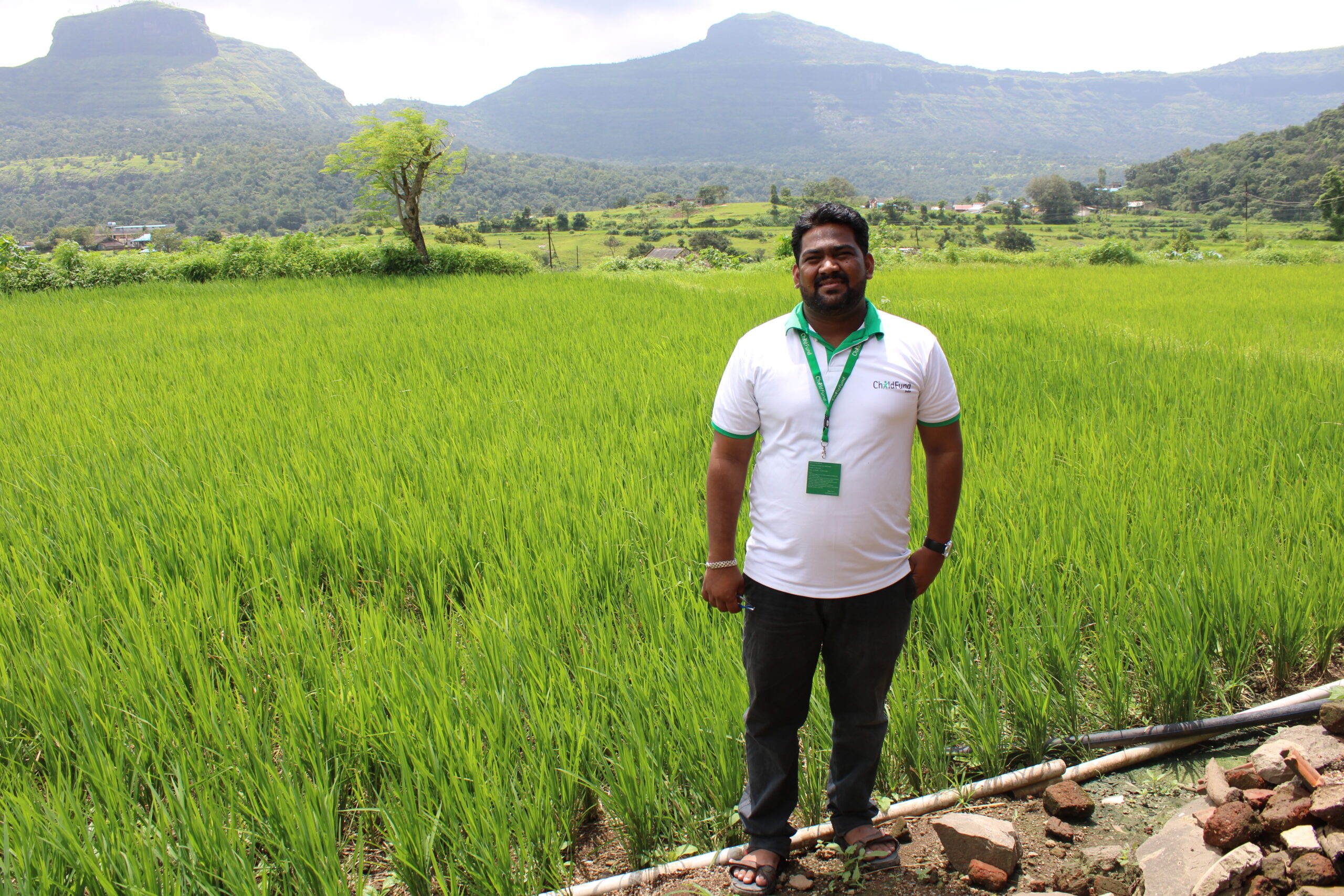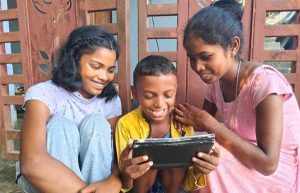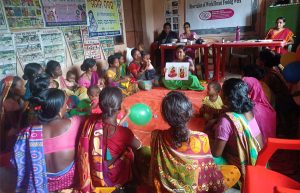 Abhijeet Madane, ChildFund India’s Senior Project Officer, is one of our COVID warriors who has been working in the remote district Junnar block of the Pune district, Maharashtra. Under ChildFund India and Project Hope’s COVID-19 Response, he and the other ChildFund COVID warriors worked tirelessly to reach medical assistance and equipment and educate masses on COVID-appropriate behavior to the people of Junnar.
Abhijeet Madane, ChildFund India’s Senior Project Officer, is one of our COVID warriors who has been working in the remote district Junnar block of the Pune district, Maharashtra. Under ChildFund India and Project Hope’s COVID-19 Response, he and the other ChildFund COVID warriors worked tirelessly to reach medical assistance and equipment and educate masses on COVID-appropriate behavior to the people of Junnar.
While he dedicated all his energy and time to helping our communities, he contracted COVID-19 himself. As his oxygen levels dropped and he slipped in and out of consciousness, his condition stabilized enough to receive further medical assistance thanks to the same equipment he helped provide the hospitals.
We spoke to Abhijeet to know about his brave, sometimes dangerous journey from being a COVID warrior to a COVID patient to a COVID survivor.
What were the challenges of working in remote areas of India?
“In rural indigenous areas the situation was grim, especially because Pune district was worse affected by COVID-19. While the entire country struggled with the shortage of vaccines, collapse of the healthcare system and lack of information regarding COVID-19, here we also had to deal with lack of roads and health centers! The nearest hospital for some communities is 25 kilometers (kms) far and they have to walk 10-12 kms across hills, just to get to the road. The frontline workers like ASHA and ChildFund staff had to cross these difficult terrains to reach communities to provide them medicines, ration and information!
There was an environment of fear. Helpless doctors and frontline struggled to treat poor patients with almost no support or protection. These patients were forced to go to private hospitals where they had to pay exorbitant fees to save their loved ones. There was rampant misinformation about the disease and discrimination against patients and their families who needed help.”
What was your motivation to work on the ground during a global pandemic?
“I saw that when people work together, great things happen. We supported communities with immediate and long-term needs to help them tide over the COVID pandemic – from immediate food relief, involving the youth to create awareness in the community, ensuring that children continued learning to helping people rebuild livelihoods. This gave them hope for a better tomorrow.
The frontline workers felt empowered to reach out to communities more confidentially and fearlessly to spread awareness on prevention of the COVID crisis because we provided us them the protective gear and equipment. We provided remote healthcare centers and hospitals with necessary medical equipment, with the help of Project HOPE. This equipment aided doctors to give critical treatment and save lives at the center itself, reducing burden on district hospitals. People stopped going to private hospitals and because they were getting quality treatment at government-run centers! It saved people from exorbitant medical expenditure.
These changes were possible because a handful of normal people like us decided to act. Even after feeling exhausted during such uncertain times, the fact that what we are doing is helping save thousands of lives, kept me motivated!”
What happened when you got contracted COVID-19?
“I immediately quarantined myself and started on medication when I felt a few symptoms. I was then admitted at Lenyandri COVID Care Centre where my condition deteriorated and I struggled to breathe. The hospital was able to save me thanks to the same equipment we had distributed under the Project HOPE work. If it wasn’t there, I may not have been here to tell my story.
Once I was stabilized a little, they shifted me to Mumbai because Remdesivir was not available in the entire Pune district. My oxygen levels dropped so low, I lost consciousness for a few days. For the next 10 days, I was on a ventilator and medicines in Mumbai.”
How would you describe the feelings you had, while being hospitalized as a COVID-19 patient?
“Those 10 days were the most helpless I’ve ever felt; I couldn’t speak or move. There was only one nurse for company who would give injections and simply leave. One day, a patient next to me, who was my age, passed away. I was terrified I might be next but there was no one to give me courage and comfort in the hospital. I lay there worrying about my future and missed my children and wife terribly.
But I never gave up hope. In that hospital bed, I decided that I will not give up on life, I will make my life count by doing something about it.”
What could have hospitals and medical staff do to make COVID-19 patients feel less afraid?
“I feel nervousness and fear take more lives than COVID-19, because a person gives up. While I understand that the staff was overburdened with lot of COVID cases, there is no sympathy or emotional support when you’re admitted. The medical staff would scream at patients, not give them clarity on what’s really happening. In such confusing scenarios, medical staff needed emotional and behavioral training so that they can be supportive to people and help them with doubts. Also, there was a need to recruit more medical staff because they felt overburdened and frustrated. I feel there needs to be a post-COVID care support too where patients and families are provided information on post-COVID symptoms and support to help in COVID-19 recovery.
Communities needed awareness on COVID recovery so they don’t discrimination against a patient and family but support them. For example, when my colleagues from ChildFund supported my wife and son through conversations, offering a helping hand with daily needs so that they didn’t feel worried, I felt at happy and at peace even when I was uncertain about my life.”
How is life post-COVID-19?
“Physically, I’m continuing to recover and grow stronger every day. Emotionally I’m stronger than ever because I’ve come back from the brink of no return. As a person, I used to be apprehensive and nervous but not anymore. Laying in that hospital bed made me realize that this life is all I have and I want to make the best of it.
I have renewed energy to help make my community better. I want to focus on helping children get back to education because they’ve lost interest in studies. Together, my team and I will reach more children, youth and families to ensure that they make education a priority. I’ll keep trying till that is a reality.”






